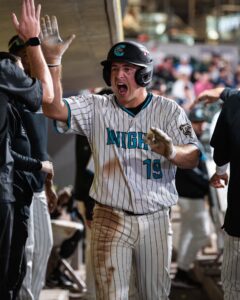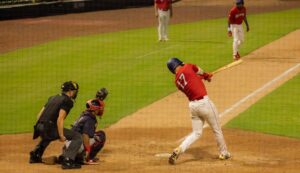Neal Cotts: The Making of a Major League Pitcher

via Clinton Cole
In this space, we typically discuss a prospect’s tools, shortcomings, and developmental needs. But what does a player need to do to shake the prospect tag and become an established major leaguer?
We’ve witnessed several White Sox prospects struggle upon their promotion to Chicago. This proves development does not end at the Triple-A level. With a few prospects expected to get their first taste of the majors this year and a couple more trying to cross the line between prospect and big leaguer, it’s the optimum time to look at that process.
Who better to turn to than a player from a small town in Illinois, who played his college ball at Illinois State University? Last I checked, neither of those places was a hotbed for finding major league talent. In a phone interview with FutureSox, I spoke with former White Sox reliever Neal Cotts about his minor league experience and the transition to becoming a vital contributor on a World Series winner.
College Years
“When I got to Illinois State after coming from a pretty small high school, I wasn’t established. They had a lot of guys from the Chicago are, and a lot of other guys coming in that had a lot better credentials than I did,” said Cotts.
“The first two years, I threw well. I started my freshman year. Unexpectedly, halfway through my junior year, our coach (Jeff Stewart) told me to talk to the school’s financial advisor (Dave Bergman). He thought I might get drafted.
“I did some interviews with different teams, and I was pitching really well. Then Dave told me that I need to find an agent because I was going to get drafted higher than his level of expertise. They had me slotted in various places.”
Drafted by Oakland
Cotts ended up going to Oakland as the 69th overall pick in the second round of the 2001 draft. As a starting pitcher, in an organization that already had Tim Hudson, Barry Zito, and Mark Mulder in the rotation at the major league level, Cotts knew he had a steep climb to the majors.
“Their starting staff was all in their mid-to-late 20s. They weren’t going anywhere. Trying to break into that staff would have been challenging.”
To his benefit, Cotts only spent a little more than a year in the Oakland organization coming over to White Sox as a player to be named later in the Billy Koch deal.
“The only players that made the majors that I played with in Oakland were Bobby Crosby, Jeremy Bonderman, and Rich Harden. He was the only guy that stayed up with the A’s. The rest of us, pretty much the entire draft got traded,” said Cotts.
A New Organization
After a solid year in High-A with the Oakland minor league affiliate, Cotts was assigned to Double-A Birmingham with the White Sox.
“Oakland was very regimented. They had a very regimented throwing program and how they did things. Very detailed to the specifics of counting throws. The White Sox were more free. You were on your own more,” said Cotts.
Whatever the White Sox did, it worked well for Cotts. After posting a 2.16 ERA to go with a WHIP of 1.135 and 133 strikeouts in 21 starts for the Barons. Cotts was a late-season call up for the White Sox in 2003.
“I was moved up from Double-A to the majors, and it was eye-opening. Obviously, a little bit nervous, I only made four starts, but it was valuable. I learned real quick what the strike zone was. It was a little bit different. It was an interesting adjustment.”
The numbers back up that statement as he walked 17 while striking out 10 in 13.1 innings in 2003.
Adjusting the Big Leagues
“I’d make mistakes and not have to throw the ball in the zone all the time in Double-A. And then, when I got to the big league’, mistakes got hit. Guys didn’t make mistakes by swinging at stuff too far out. That was the biggest adjustment for me.
“I was always a guy that threw fastballs up in the zone, even until I retired. In Double-A, I’d throw the ball at a guys chin or near the letter, and they’d still swing at it. Once the big leagues came, throwing the ball high needed to be set-up or there had to be a process to get to that pitch, in order to get a hitter out. I couldn’t just pump it up there and expect guys to keep swinging at it,” said Cotts.
Once again, the numbers support Cotts’s statement. In 2003, he posted an 8.10 ERA and a 6.33 FIP to go with a 2.40 WHIP in four starts.
“I remember my first start in Chicago (after two on the road). I threw an inning, and my change-up was pretty decent, but they were putting some pretty good at-bats together. Balls were hit hard.
“Robbie Alomar was playing second base, and Sandy was catching me. After I got out of the first inning, Sandy was like, ‘Neal, come over here.’ Robbie went through the whole thing. He figured out that I was tipping pitches. He told me I was doing it every single time. He said I was doing it the last time I faced them too.
“I pitched against them in back-to-back starts. Robbie told me they must not have seen it the first time, but they must have video now. It’s the little things that don’t get picked up on in the minor leagues.”
The talk with the Alomar brothers must have helped because Cotts put up decent numbers that game giving up one earned run in five innings pitched with five walks and three strikeouts.
“The other adjustment was some of my breaking stuff. I had an OK curveball in the minor leagues, but it didn’t play as well when I got up. It had to change. My curveball was loopy; the hitter could see it out of my hand. As it ended up, I dropped it when I went to the bullpen. I threw a cutter or slider the rest of my career,” said Cotts.
“To be successful at any level, the count dictates a lot. In the big leagues, you cannot get behind guys. You have to get ahead of guys, compete, and throw a lot of strikes. When I was in the minor leagues, I could fall behind guys and still get them out. Not every time, but it didn’t hurt me as much.
“In the big leagues, if you get behind, it’s going to be a really hard day. Sometimes you could get lucky and pitch your way out of it. The vast majority of time, the percentages weren’t going to be in your favor. You really had to hone in on being ahead and attacking.”
The Move to the Pen
“Ozzie and Coop moved me to the bullpen. I threw pretty good in Spring Training that year (2004). I remember Coop sat me down, and he said, Ozzie wants you to be in the bullpen. If you’re dead set on starting, it’ll be in Triple-A. I told Coop, I’ll stick to the bullpen.” said Cotts
“The following year we signed El Duque (Orlando Hernandez) and Freddy (Garcia), we were loaded. There was no cracking that starting staff. I learned a lot. I took some lumps. I got my brains beat in a lot. Who knows where my career would have went, but Jon Adkins and I made the team as rookies, and there were times we really struggled.”
“I remember about two months into the season, someone in the media asked Ozzie what was going on with these guys. Are they going to get moved down? What are you doing with them? Ozzie stood behind us and to this day, I’m thankful for it. He said they’re out there, and sometimes they’re not going to be the greatest, but they’re learning. I’m sticking with them all year.
“That was a nice thing. When you are young, and you don’t do as well for a month or a few outings, yeah, you’re looking over your back looking to see if they’re going to change their mind and go with somebody else. That was one nice thing that really helped me out career- wise,” said Cotts.
Guillen, not known for patience, exhibited some in 2004 as Adkins appeared in 50 games allowing 75 hits in 62 innings. He posted an ERA of 4.65 with a FIP of 5.37 and a 1.532 WHIP. Cotts numbers were relatively similar, allowing 61 hits in 65.1 innings over 56 appearances. His ERA was 5.65, with a FIP of 5.38 and a 1.393 WHIP.
Coop’s Cutter
“Honing on the cutter turned it around for me. Coop talked to me about it, and it was a new pitch that whole first year. I was trying to figure out what to do with it, cause Buehrle threw it so effectively. My grip was a little bit different than his. I figured out a way to throw it. I threw it a ton, and I lived on it. I got a lot of outs on it. When it was good, I had some really good years,” said Cotts.
Obviously, we all know how vital Cotts’ role as a late-inning, left-handed set-up man was to the 2005 team. In one of the best years of his career, Cotts had a lights out 1.94 ERA, 2.95 FIP with a WHIP of 1.11 good for a 2.0 WAR in the 2005 season.
It Takes a Village
You’ve probably heard the cliché’ “It takes a village to raise a child.” Based on this account, developing a major league pitcher is kinda like that. In this story, there are several times, Cotts career could have slipped off the tracks. Whether it be Robbie Alomar’s advice, Ozzie Guillen’s persistence, and foresight to move him to the bullpen or Don Cooper teaching him a new pitch, there was always someone there to keep Cotts career from derailing.
Photo credit: Clinton Cole/FutureSox
Want to know right away when we publish a new article? Type your email address in the box on the right-side bar (or at the bottom, if on a mobile device) and click the “Subscribe” button. Our list is completely spam free, and you can opt out at any time. Also, consider supporting FutureSox on Patreon! You can get early access to special articles and Patreon-only posts, in addition to more benefits you can read about here. Shop our exclusive merchandise! Show your support with the latest FutureSox apparel.






Very nice peice.
Thank you, had fun writing it.